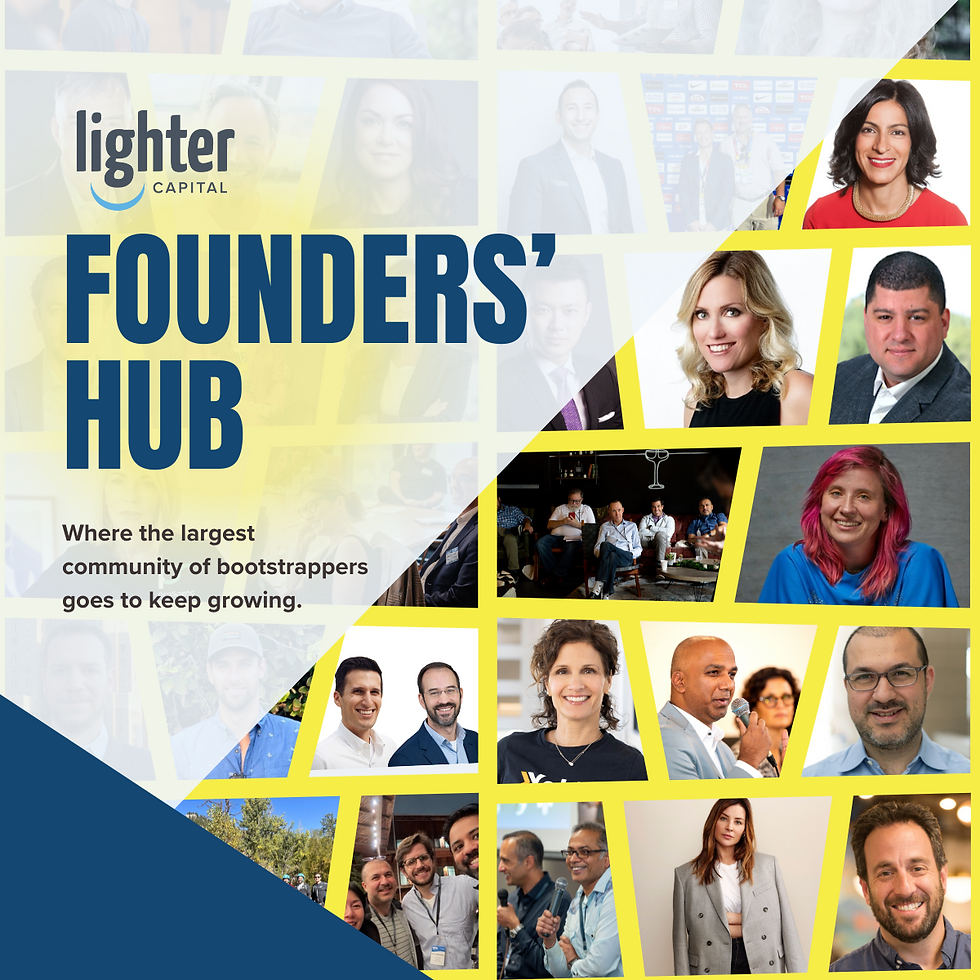How Visible.vc Got Startup Funding in 15 Days
- Lighter Capital

- Apr 18, 2018
- 4 min read
Updated: Sep 11
Last October, Visible.vc came to Lighter Capital looking for an injection of capital to scale their business. The Chicago-based company creates tools that simplify stakeholder relations, communication, and ongoing performance tracking for more than 1,600 businesses.
Just 15 days after CEO Mike Preuss’s first phone call with the Lighter team, the company received a tranche of non-dilutive funding directly wired to their bank account. For those used to the typical six-to-nine-month process to secure venture capital funding, the speed of this transaction may seem hard to believe.
While it is true that Visible’s round of funding is the fastest Lighter has ever done, our algorithmic approach allows us to evaluate and underwrite fundings quickly—we typically fund qualified companies in about four to six weeks. Preuss was able to speed his process up even further by coming to the funding process extremely well prepared.
He proactively shared business metrics and reports, such as detailed churn reports and clean customer data. The preparedness and responsiveness of the CEO and the rest of the team showed that they understand their business and have a clear idea of how they planned to use the funds to scale.
Preuss joined Lighter’s Chief Investment Officer, Allen Johnson, for a recent webinar in which they compared notes about VC funding and debt financing and talked about the best way to prepare for a funding search. They also highlighted the importance of finding the right partner—a huge consideration that founders often overlook in a debt funding search.
Key Takeaways
Debt financing doesn’t require the intense growth rate or the equity dilution that VC funding does.
Basic financial info is necessary to apply for either kind of funding, but the more detailed info about a variety of financial questions, the better.
The process of seeking funding should be a two-way assessment process; it’s important that the relationship be a good fit for both sides.
VC vs Debt Financing
One major difference between VC and debt financing, as evidenced by Visible’s story, is the disparity in how long it takes to secure funding. But according to Preuss and Johnson, there are plenty of other differences.
VC Funding
Securing VC funding needs to be done by the CEO or the founding team, and is a long, time-consuming process: generally, six to nine months or longer.
Only 1% of companies get VC funding. Companies hear “no” for many reasons, such as lack of scale or too small of a market.
Requirements for SaaS companies seeking VC funding are extremely high, with the majority of investments targeting companies demonstrating 3x year-over-year growth.
Key things to consider in pursuing VC funding are the equity dilution per round (20-30%) and change in company control (such as ownership percentages and board seats).
Debt Financing
Debt financing has a much lower bar in terms of growth rate and potential for scale.
Common reasons companies get turned down for funding include poor or incomplete financials, inability to produce the required documents, and an unclear or potentially risky path to repayment.
Debt financing is less about the extreme upside and more about the probability of repayment.
Key factors to consider in pursuing debt financing are whether a personal guarantee or restrictive financial covenant is required, as well as the true cost of warrant coverage.
How to Present as Well as Visible
Visible was able to get funding so fast because they had their financial house in order and could easily demonstrate that to Lighter. So how can you do the same?
For VC Funding
VCs like to see a team with a high pedigree, business and finance KPIs with traction, and a trend over time that shows how you’re growing instead of providing momentary snapshots (as Preuss put it, show them “lines, not dots”).
Equally important to clearly demonstrate the company customer acquisition model is a hiring plan outlining how the money will enable the company’s growth.
Of course, VCs love to see insane growth.
For Debt Financing
Debt providers use historical results to support decisions to provide funding, so it’s important to have well prepared historical financial statements, a proven revenue model, a clear understanding of outstanding debt obligations, and corporate documents.
Beyond the historical look, they also like to see revenue growth and a pathway to profitability, a plan for using the funding strategically, a management team overview, and an understanding of future upside and downside scenarios.
A Key Consideration: The Right People
Whichever type of funding you’re looking for, there is one important consideration that many funding seekers don’t take seriously enough. It is essential to partner with the right people and structure that partnership the right way.
“The vetting should be done on both sides,” said Johnson. “It’s not just one way, with the entrepreneur looking for the first check.”
Once you’ve found the right people to work with, it’s essential to have a common vision and clear communication about how you will all get there.
“You want to make sure you’re on the same page,” said Preuss.
In the case of Visible.vc, that direction was toward growth, thanks to the company’s choice of partnering with us at Lighter.






